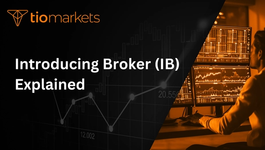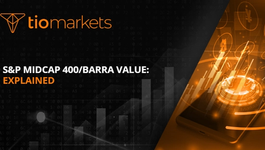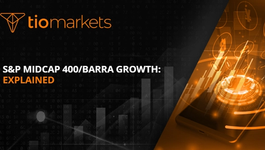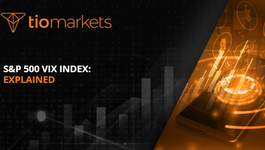Philadelphia Gold and Silver Index: Explained
BY TIOmarkets
|August 14, 2024The Philadelphia Gold and Silver Index, often abbreviated as XAU, is a highly significant sectoral index that focuses on the mining industry. This index, which is traded on the Philadelphia Stock Exchange, comprises of companies involved in the gold and silver mining sector. It is an essential tool for traders and investors interested in the precious metals market, providing a snapshot of the sector's performance and serving as a benchmark for investment portfolios.
Understanding the dynamics of the XAU can offer valuable insights into the broader commodities market, the global economy, and the factors that influence the prices of gold and silver. This article aims to provide an in-depth explanation of the Philadelphia Gold and Silver Index, its components, its significance in trading, and how to interpret its movements.
Origins and Evolution of the XAU
The Philadelphia Gold and Silver Index was established in 1983, making it one of the oldest sectoral indices in the United States. It was created to track the performance of companies involved in the mining of precious metals, primarily gold and silver. The index initially included 16 companies, but the number of constituents has varied over time due to mergers, acquisitions, and other corporate actions.
Over the years, the XAU has evolved to reflect changes in the mining industry and the global economy. It has experienced periods of significant growth, driven by rising gold and silver prices, as well as periods of decline, often linked to economic downturns or falling commodity prices. Despite these fluctuations, the XAU has remained a key indicator of the health of the precious metals sector.
Significance of the XAU's Launch
The launch of the XAU in 1983 marked a significant development in the financial markets. Prior to its introduction, there were few tools available for tracking the performance of the gold and silver mining sector. The XAU filled this gap, providing traders and investors with a benchmark for comparing the performance of individual mining companies and the sector as a whole.
Moreover, the creation of the XAU coincided with a period of significant change in the global economy, including the liberalization of financial markets and the growth of commodity trading. The XAU provided a valuable tool for navigating these changes, helping market participants to understand the dynamics of the precious metals market and to make informed investment decisions.
Components of the XAU
The Philadelphia Gold and Silver Index is a capitalization-weighted index, meaning that the larger the market capitalization of a company, the greater its impact on the index's performance. The XAU includes companies from around the world, reflecting the global nature of the mining industry. However, the majority of its constituents are based in North America.
The index's constituents are reviewed periodically to ensure they continue to meet the eligibility criteria. These criteria include factors such as market capitalization, trading volume, and financial health. Companies that no longer meet these criteria may be removed from the index, while new companies that meet the criteria may be added.
Selection of Constituents
The selection of constituents for the XAU is a rigorous process that takes into account a variety of factors. These include the company's market capitalization, its trading volume, and its financial health. The aim is to ensure that the index accurately represents the performance of the gold and silver mining sector.
Market capitalization is a key factor in the selection process. Larger companies tend to have a greater impact on the index's performance, reflecting their importance in the sector. Trading volume is also considered, as it provides an indication of the company's liquidity and the ease with which its shares can be bought or sold. Finally, the company's financial health is assessed to ensure it is capable of sustaining its operations and meeting its financial obligations.
Weighting of Constituents
The constituents of the XAU are weighted according to their market capitalization. This means that larger companies have a greater impact on the index's performance. The weighting of each constituent is reviewed periodically to ensure it accurately reflects the company's current market value.
The use of market capitalization weighting ensures that the index accurately represents the performance of the gold and silver mining sector. It also means that the index's movements are influenced by the performance of the largest companies in the sector, making it a valuable tool for tracking the health of the industry as a whole.
Trading the XAU
The Philadelphia Gold and Silver Index is not directly tradable, but it serves as a benchmark for various financial products, including exchange-traded funds (ETFs), futures contracts, and options. These products allow traders and investors to gain exposure to the performance of the gold and silver mining sector without having to invest directly in the shares of individual companies.
Trading the XAU can offer a range of benefits, including diversification, potential for high returns, and the ability to hedge against inflation or economic uncertainty. However, it also involves risks, such as market volatility, currency risk, and the potential for losses if the prices of gold and silver decline.
Benefits of Trading the XAU
One of the main benefits of trading the XAU is the potential for diversification. By investing in a range of companies involved in the gold and silver mining sector, traders and investors can spread their risk and potentially improve their returns. The XAU also offers exposure to the global economy, as the performance of the mining sector is influenced by factors such as economic growth, inflation, and geopolitical events.
Another benefit of trading the XAU is the potential for high returns. The prices of gold and silver can be highly volatile, and this volatility can translate into significant price movements in the XAU. This can offer opportunities for traders and investors who are able to accurately predict the direction of these movements.
Risks of Trading the XAU
While trading the XAU can offer potential benefits, it also involves risks. One of the main risks is market volatility. The prices of gold and silver can be highly volatile, and this volatility can lead to significant price movements in the XAU. This can result in losses for traders and investors if the prices of gold and silver decline.
Another risk of trading the XAU is currency risk. As the index includes companies from around the world, changes in exchange rates can impact the index's performance. This can result in losses for traders and investors if the value of their home currency declines relative to the currencies of the countries where the index's constituents are based.
Interpreting Movements in the XAU
Interpreting movements in the Philadelphia Gold and Silver Index requires an understanding of the factors that influence the prices of gold and silver, as well as the dynamics of the mining industry. These factors include global economic conditions, inflation, interest rates, geopolitical events, and supply and demand dynamics.
For example, during periods of economic uncertainty or high inflation, the prices of gold and silver often rise, as investors seek safe-haven assets. This can lead to an increase in the XAU. Conversely, during periods of economic growth or low inflation, the prices of gold and silver may decline, leading to a decrease in the XAU.
Impact of Economic Conditions
Global economic conditions can have a significant impact on the XAU. During periods of economic growth, demand for gold and silver often increases, as these metals are used in a wide range of industries, from electronics to jewelry. This increased demand can drive up the prices of gold and silver, leading to an increase in the XAU.
Conversely, during periods of economic downturn, demand for gold and silver may decline, leading to a decrease in their prices and a corresponding decrease in the XAU. However, during such periods, gold and silver may also be sought after as safe-haven assets, which can help to support their prices and the XAU.
Impact of Inflation and Interest Rates
Inflation and interest rates can also influence the XAU. High inflation can lead to an increase in the prices of gold and silver, as these metals are often seen as a hedge against inflation. This can result in an increase in the XAU. On the other hand, high interest rates can make other investments more attractive relative to gold and silver, potentially leading to a decrease in their prices and a corresponding decrease in the XAU.
It's important to note that the relationship between inflation, interest rates, and the XAU is complex and can be influenced by a range of other factors. Therefore, traders and investors should consider a wide range of economic indicators and market conditions when interpreting movements in the XAU.
Conclusion
The Philadelphia Gold and Silver Index is a vital tool for traders and investors interested in the precious metals market. It provides a snapshot of the performance of the gold and silver mining sector, serving as a benchmark for investment portfolios and a basis for various financial products.
Understanding the dynamics of the XAU can offer valuable insights into the broader commodities market, the global economy, and the factors that influence the prices of gold and silver. By considering the index's components, its trading implications, and the factors that drive its movements, traders and investors can make more informed decisions and potentially enhance their returns.
Start Trading with TIOmarkets
Ready to dive into the world of precious metals trading? Join TIOmarkets, a top-rated forex broker offering a robust online trading platform. With over 170,000 accounts opened across more than 170 countries, we provide you with the opportunity to trade over 300 instruments across 5 markets, including the dynamic gold and silver markets. Benefit from low fees and our comprehensive suite of educational resources designed to elevate your trading skills. Take the next step in your trading journey and Create a Trading Account today to explore the potential of the precious metals market.

Risk disclaimer: CFDs are complex instruments and come with a high risk of losing money rapidly due to leverage. You should consider whether you understand how CFDs work and whether you can afford to take the high risk of losing your money. Never deposit more than you are prepared to lose. Professional client’s losses can exceed their deposit. Please see our risk warning policy and seek independent professional advice if you do not fully understand. This information is not directed or intended for distribution to or use by residents of certain countries/jurisdictions including, but not limited to, USA & OFAC. The Company holds the right to alter the aforementioned list of countries at its own discretion.
Join us on social media

Behind every blog post lies the combined experience of the people working at TIOmarkets. We are a team of dedicated industry professionals and financial markets enthusiasts committed to providing you with trading education and financial markets commentary. Our goal is to help empower you with the knowledge you need to trade in the markets effectively.





